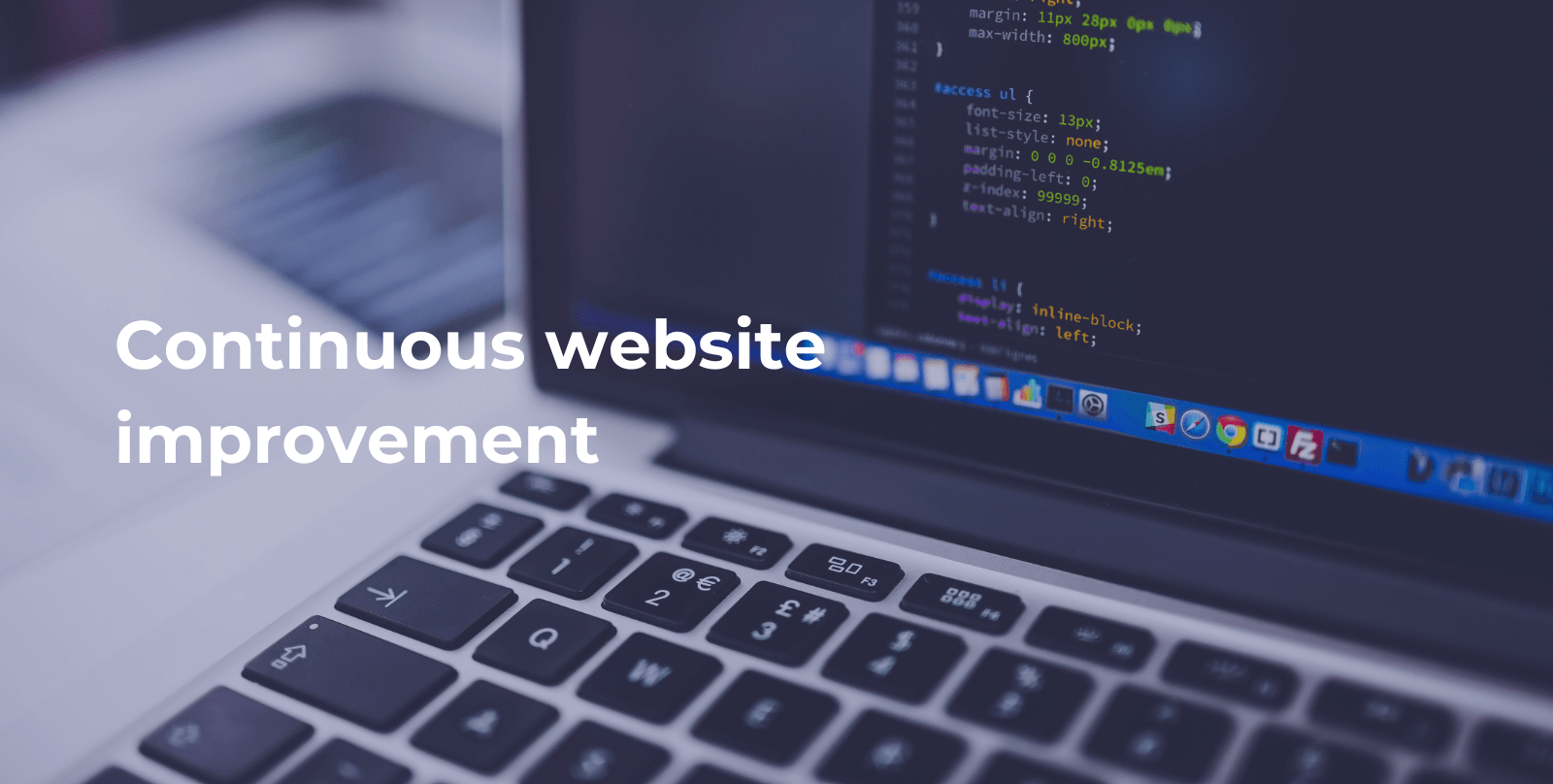What does Continuous Improvement mean to you?
Identify, plan, execute, review. Continuous improvement is a well-known process in the world of supply chain and business operations, but its benefits in marketing activity and website management are often overlooked.
It’s a common misconception that once a website is launched, the hard work is done, and we move into the ‘set and forget’ phase. In reality ongoing maintenance and continual improvement of the site and its assets is crucial to performance and success.
The role of your website in achieving business goals
Technology updates and trends move so quickly that it’s easy to fill up your task list with changes and reworks. However, a website is often the greatest go to market tool a company has, and a comprehensive website strategy helps to give your work purpose, map a path to reach your overall goals and informs how you measure results. Here are five things to consider when building out your continuous improvement strategy for your website.
1. Identify your current state
There are different considerations to make depending on the status of your website – have you just launched a new site? Are you aiming to drive new visitors or diversify and expand your offering? Understanding your priorities will help guide you towards your plan.
As soon as people begin visiting your site, behaviour data starts to build – what pages they’re visiting, whether they are on their phone or computer, what they like (and don’t!). This data helps you understand your current website and where potential gaps are.
Undertake a full evaluation of your current content. Having an aim to regularly update and refresh your content will ensure your website flexes and develops alongside your business. By analysing your content and identifying your strong and weak spots, your content plan will begin to develop.
2. Map your goals and objectives
So now you know where you are, but how does this align with where you want to be? Your website is an important tool for your sales, business development, and customer engagement teams. Aligning your digital goals with your overall company vision and purpose will help you unlock the potential of your platform and ensure the work you are putting in will be delivering for the organisation in the long run.
As your website continuous improvement and content development has no real end-date, it’s easy to get disheartened and feel overwhelmed, but by outlining clear KPIs for the short, medium, and long term, you’ll be able to celebrate those successes along the way to keep energy levels up and stay focused on optimisation.
4. Focus on your audience
There can sometimes be a gap between what your company thinks the audience wants and what your audience actually needs. To continue to build improvements into your platform, you need to think as the customer. Is it easy for your users to work out where they need to go to find the information they need? Optimise your navigation, page load times, and test different design elements and ways of using content.
5. Create your content
Keep watch for opportunities to create fresh content and ensure you are getting the maximum value from it by implementing SEO best practices and technology updates. In the same way that a Google Bot will trawl your content and learn to adjust its own algorithms, you can keep your SEO practices up to date to stay ahead of any changes.
When in doubt, use targeted survey questions and feedback forms to get a direct line to your audience and make changes based on their feedback.
Bonus consideration: Experimentation
Experimentation is a great way to drive your continuous improvement. Improving understanding of your audiences, user design, conversion and doing it quickly. Using clear, time bound experiments to increase the effectiveness of your website. When experimenting with your website think about:
- Your experimentation shouldn’t be about vanity metrics – it needs to focus on where you can drive the most business impact. So, places to start are:
- Pages, sections or areas that have the highest impact
- Starting at the end of the funnel
- Don’t just focus on A/B testing – think about big radical ideas that drastically improve the user experience. This is where you’ll see the biggest improvements
Remember to be agile – when it comes to continuous improvement it should be about spending your time where you can drive the best possible results – for your audiences and for your business goals. Test, learn and build on your findings.
Your continuous improvement journey
While website development and maintenance is a never-ending cycle, the benefit it can bring your business is tangible. By being purposeful and consistent in your continuous improvement strategy, you’ll drive better engagement with your customers and ensure you are well positioned to adapt quickly to an ever-changing digital environment.

